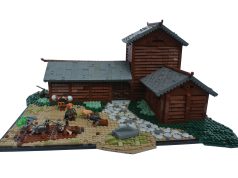Reaching a fitness plateau can feel like hitting an invisible wall, where progress slows or even stalls despite your best efforts. It’s a common experience, and one that can be both frustrating and disheartening. But take heart—you’re not alone, and there’s a way forward. In this article, we’ll explore the reasons behind these plateaus and provide you with practical, effective strategies to overcome them. With a little patience and the right approach, you can break through these barriers and continue on your journey to improved health and fitness. Let’s take this step together and reignite your progress.
Understanding the Causes of Fitness Plateaus and How They Affect Your Progress
Fitness plateaus are a common and often frustrating experience for many individuals on their fitness journey. These occur when your body adapts to your current routine, leading to a halt in progress despite your efforts. Understanding the causes of these plateaus is crucial to overcoming them and reigniting your progress.
Several factors can contribute to a fitness plateau, including:
- Lack of variety in workouts: Repeating the same exercises can lead to muscle adaptation, reducing their effectiveness over time.
- Inadequate rest and recovery: Overtraining without sufficient recovery can stall progress and increase the risk of injury.
- Poor nutrition: Not providing your body with the necessary nutrients can hinder muscle growth and energy levels.
Understanding these causes allows you to make informed adjustments to your routine. By incorporating variety, ensuring adequate rest, and optimizing your nutrition, you can break through the plateau and continue progressing towards your fitness goals.
| Factor | Impact | Solution |
|---|---|---|
| Lack of Variety | Muscle adaptation | Mix up exercises |
| Inadequate Rest | Increased injury risk | Prioritize recovery |
| Poor Nutrition | Stalled progress | Improve diet |

Adapting Your Workout Routine to Break Through Plateaus with Ease
Hitting a plateau in your fitness journey can feel frustrating, but it’s also an opportunity to innovate and grow. The key is to adapt your workout routine thoughtfully, allowing your body to respond to new challenges. Here are some strategies to help you break through plateaus effortlessly:
- Switch Up Your Exercises: If you’ve been doing the same exercises for a while, it’s time to shake things up. Introduce new movements that target the same muscle groups in different ways. For example, if you always do barbell squats, try goblet squats or lunges.
- Vary Your Intensity: Adjusting the intensity of your workouts can stimulate progress. Consider incorporating HIIT (High-Intensity Interval Training) or LISS (Low-Intensity Steady State) cardio sessions into your routine to keep your body guessing.
- Focus on Form: Sometimes, refining your technique can unlock new gains. Pay attention to your form and make sure you’re performing each exercise correctly to maximize effectiveness and prevent injuries.
| Current Routine | Adaptation Suggestion |
|---|---|
| 3 sets of 10 reps | 5 sets of 5 reps with heavier weights |
| 30-minute steady run | 20-minute HIIT session |
| Weekly yoga session | Try Pilates or Tai Chi for variety |
Remember, overcoming a plateau is as much about mindset as it is about physical changes. Stay patient, listen to your body, and embrace the journey of growth. Each adjustment brings you closer to your fitness goals.

The Role of Nutrition in Overcoming Fitness Stagnation
When you’re stuck in a fitness plateau, the problem might not be your workout routine—it’s often your nutrition. Fueling your body correctly can be the key to breaking through those stubborn barriers. Here’s how nutrition plays a crucial role:
- Caloric Intake: Consuming too few or too many calories can both stall your progress. It’s essential to find the right balance to support your energy needs and goals.
- Macronutrient Balance: Adjusting the ratios of proteins, fats, and carbohydrates can have a significant impact. For instance, increasing protein can support muscle growth and repair, while the right fats and carbs can enhance energy levels.
- Micronutrients: Vitamins and minerals might be the missing piece in your puzzle. Ensure you’re getting enough through a varied diet or supplements to support overall body function.
| Macronutrient | Role | Sources |
|---|---|---|
| Protein | Muscle repair & growth | Chicken, Fish, Beans |
| Fats | Energy & hormone production | Avocado, Nuts, Olive oil |
| Carbohydrates | Primary energy source | Whole grains, Fruits, Vegetables |
Remember, everyone’s body is different, and what works for one person might not work for another. It’s crucial to listen to your body and possibly consult with a nutritionist to tailor your diet to your specific needs. With the right nutrition strategy, you’ll be on your way to overcoming your fitness plateau.

Incorporating Rest and Recovery to Enhance Performance and Growth
Feeling stuck in your fitness journey can be incredibly frustrating, but often the solution lies in giving your body the rest and recovery it desperately needs. Incorporating adequate downtime can lead to breakthroughs in both performance and muscle growth. When you consistently push your body to its limits without proper recovery, you risk burnout and stagnation. Prioritize sleep, nutrition, and mental relaxation as integral components of your training regimen.
- Sleep: Aim for 7-9 hours per night to allow your body to repair and rejuvenate.
- Nutrition: Focus on a balanced diet rich in proteins, healthy fats, and carbohydrates to fuel recovery.
- Mental Relaxation: Engage in activities like meditation or yoga to reduce stress and improve overall well-being.
To help visualize the balance between exercise and recovery, consider the table below:
| Activity | Rest Period | Benefits |
|---|---|---|
| Strength Training | 48-72 hours | Muscle repair and growth |
| Cardio Workouts | 24-48 hours | Improved endurance and heart health |
| High-Intensity Interval Training (HIIT) | 48 hours | Increased metabolism and fat loss |
Integrating these rest intervals into your routine can help break through plateaus by allowing your muscles to recover and adapt, ultimately enhancing your performance and achieving the growth you seek.








































